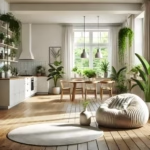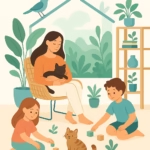Conscious design for better living.
Well-being begins in the place you live.
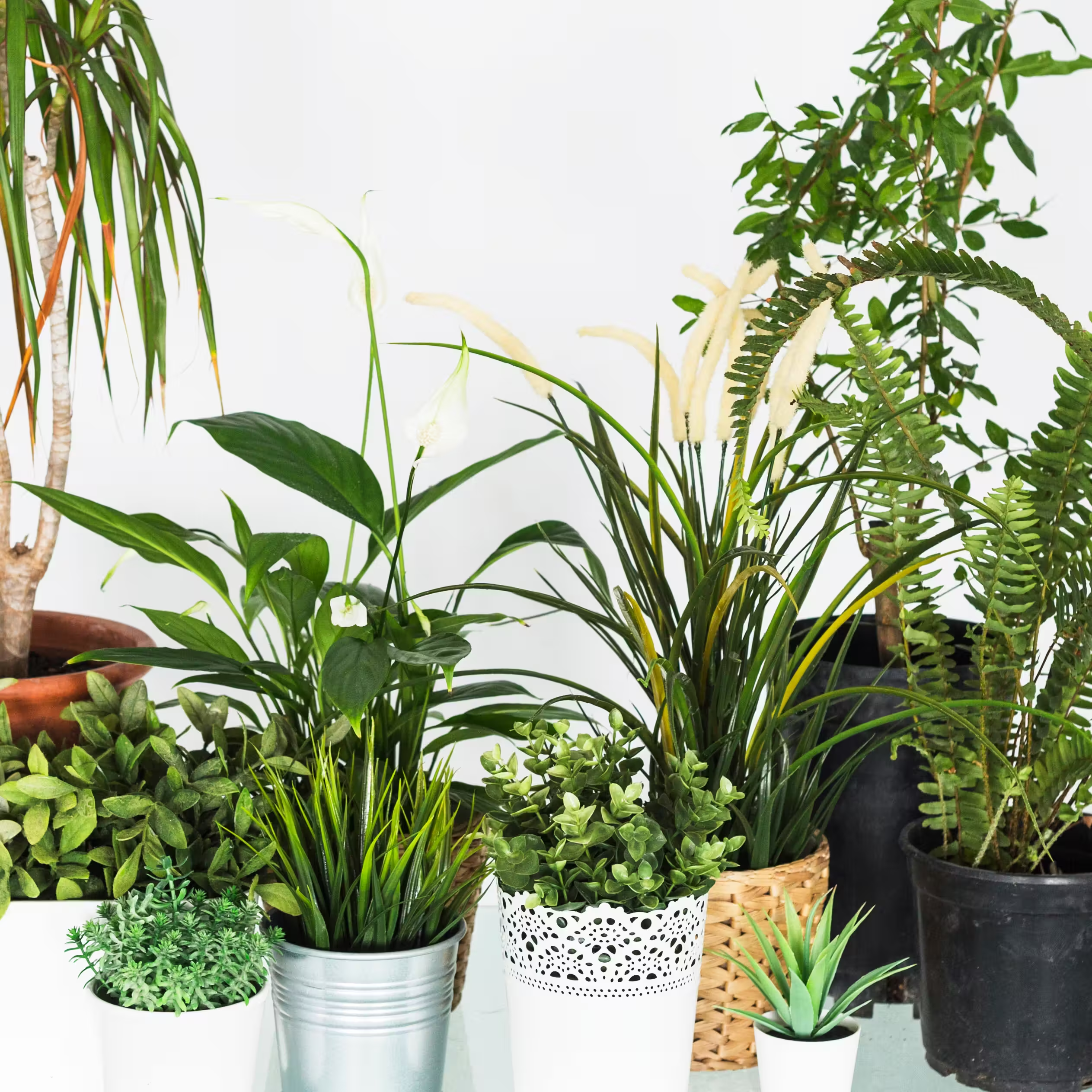
Integrating indoor plants into your home not only enhances its beauty but also improves well-being, connecting interior design with the principles of neuroarchitecture. These disciplines combined demonstrate how natural elements and spatial arrangement can influence our emotions and quality of life.
Recent studies have shown that indoor plants positively influence human functions, especially by promoting physiological relaxation and improving cognitive performance. They can also significantly reduce systolic blood pressure (SBP) and enhance academic achievement. The studies concluded that people function better with indoor plants than without them. One factor to consider is the integration of plants into buildings to efficiently improve air purification.
Green spaces are not only needed in cities but also within buildings to promote health and well-being. Due to their accessibility and ease of implementation, indoor plants should be considered a key element in designing healthy cities, contributing to more effective daily functioning.
Benefits of Indoor Plants
1. Emotional Well-being
Neuroarchitecture highlights how integrating natural elements into your living room design, like plants or furniture with organic finishes, can significantly reduce stress levels. These elements bring a sense of calm, helping you feel grounded and more connected to your environment. They also promote better focus and emotional balance by creating a serene atmosphere. Open-concept designs amplify this benefit by seamlessly blending nature into your everyday activities.
2. Air Purification
Certain plants, such as the snake plant (Sansevieria) and pothos, naturally filter the air, removing toxins like formaldehyde and benzene. This results in cleaner, fresher indoor air, which is crucial for overall health. Better air quality not only reduces respiratory issues but also boosts energy levels. Adding these plants to an open-concept room ensures their benefits are distributed across a larger area.
3. Harmonious Decor
Plants are excellent decor elements that complement furniture and other accessories in your home. They introduce a sense of balance and warmth, making spaces feel more inviting. Open-concept designs benefit particularly, as plants can serve as subtle dividers or focal points that tie different areas together. Their versatility makes them ideal for enhancing the aesthetic appeal of any style of interior.
4. Enhanced Emotional Connection
The presence of plants in your living area fosters a deeper bond with nature, a core principle of biophilic design. This connection reduces feelings of isolation, especially in urban settings, and enhances overall well-being. Open-concept spaces amplify this benefit, providing a harmonious backdrop that combines natural and man-made elements. This creates an emotionally fulfilling environment that supports mindfulness and relaxation.
5. Boosted Productivity and Creativity
Living with plants in an open-concept room encourages mental stimulation and boosts productivity. Their vibrant green hues and organic shapes can inspire fresh ideas and keep your mind engaged. Whether you’re working, reading, or brainstorming, plants foster a calm yet energizing atmosphere. The expansive layout of an open space further enhances these benefits by preventing clutter and encouraging free thought.
6. Improved Acoustic Comfort
An open-concept living room can sometimes amplify sound, but plants act as natural noise dampeners. Their leaves and stems absorb sound waves, reducing echoes and background noise. This makes conversations clearer and the space more peaceful. Adding taller plants or hanging greenery strategically ensures that your living area is as acoustically comfortable as it is visually appealing.
7. Increased Aesthetic Versatility
The flexibility of plants makes them ideal for personalizing an open-concept room. Their variety in size, shape, and color allows you to experiment with different arrangements, from lush tropical corners to minimalist accents. They seamlessly adapt to different interior styles while adding a fresh, dynamic touch. Paired with natural wood finishes or neutral tones, they elevate the overall decor to create a cohesive and lively space.
The perfect plant for your space: Indoor Plants for Beginners in Interior Design
These options are ideal for combining functionality and aesthetics:
| Plant | Characteristics | Care |
|---|---|---|
| Pothos | Resilient and adaptable to any design. | Moderate watering and indirect light. |
| Snake Plant | Minimalist, perfect for modern furniture. | Water every 2-3 weeks. |
| Fern | Adds texture and movement to neutral spaces. | Frequent watering and high humidity. |
| Monstera | A statement piece, ideal for tropical styles. | Bright indirect light and weekly watering. |


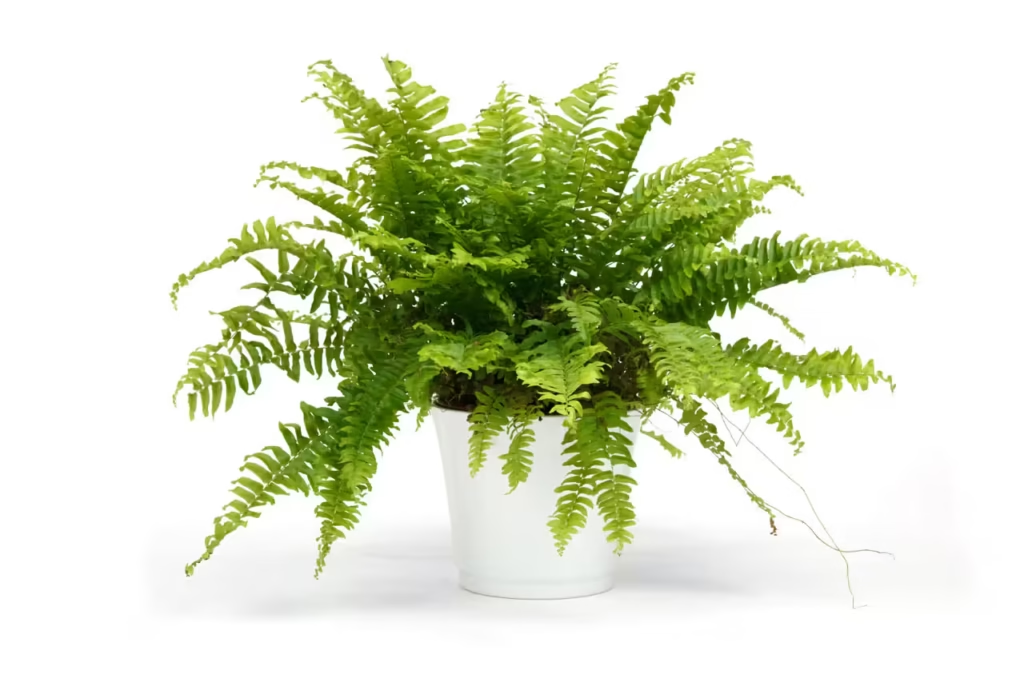
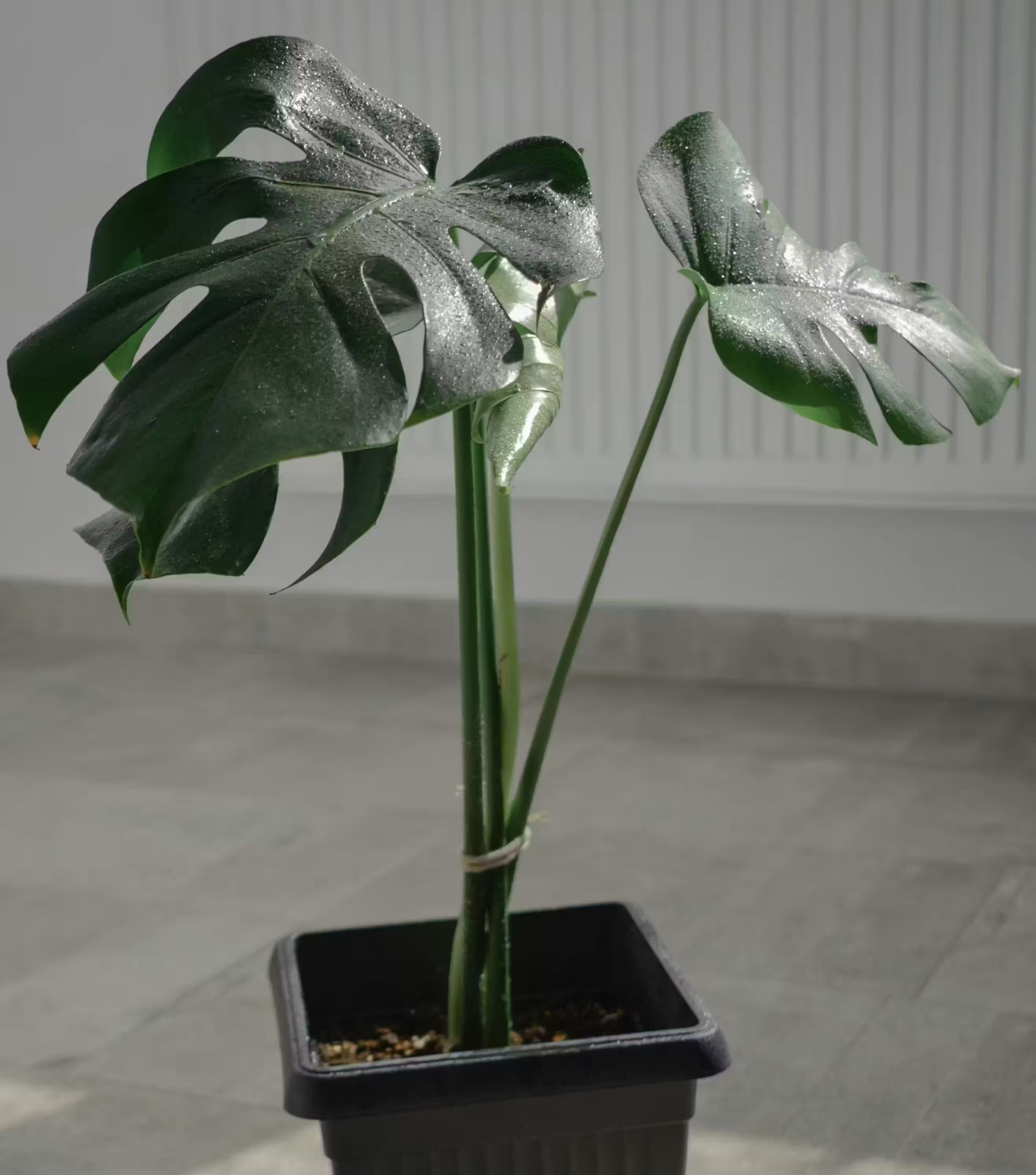
How to Integrate Indoor Plants into Neuroarchitecture
Focus on Focal Points
Strategically placing a monstera or a tall plant near prominent features of your open-concept living room, like windows, sofas, or desks, can create a strong visual anchor. These plants draw the eye, adding depth and balance to the overall design. For example, a lush monstera beside a sleek sofa softens sharp lines while introducing a touch of nature. This technique not only enhances the aesthetic appeal but also creates harmony between furniture and natural elements, making the space feel cohesive and inviting.
Create Calming Corners
Transform an unused corner of your open-concept space into a serene retreat by combining plants, cushions, and a cozy chair. Opt for smaller plants like ferns, succulents, or peace lilies, which are easy to maintain and visually soothing. Add textures with soft cushions and a throw blanket to increase comfort. This dedicated spot becomes a perfect place to read, meditate, or simply unwind, offering a mental escape from the demands of daily life.
Distribute by Light
Neuroarchitecture emphasizes the role of natural light in creating uplifting spaces, and plants can help maximize this effect. Position light-loving species, such as fiddle-leaf figs or areca palms, near windows to thrive while enhancing the room’s natural glow. Use furniture with low profiles to avoid blocking light paths and maintain a bright, airy atmosphere. This thoughtful arrangement not only benefits the plants but also ensures the space feels open and energizing, aligning with biophilic design principles.
Key Tips for Caring for Your Plants
- Avoid overwatering: Ensure your pots have proper drainage to protect both the plant and the finish of nearby furniture.
- Use decorative pots: Ceramic or natural fiber pots can complement interior design, adding an artisanal touch.
- Incorporate plant stands: Metal or wooden stands can elevate plants and add dynamism to the space.
Plants for Different Lifestyles and Interior Design
| Lifestyle | Recommended Plants | Complementary Furniture |
|---|---|---|
| Little free time | Snake plant, cactus, ZZ plant. | Minimalist furniture to avoid clutter. |
| Small spaces | Pothos, peperomia, pilea. | Floating shelves or hanging planters. |
| Pets at home | Calathea, areca palm (non-toxic). | Sturdy, easy-to-clean low tables. |
| Tropical decor | Monstera, Kentia palm. | Natural wood furniture and woven textures. |

Low Light Indoor Plants
Indoor plants that thrive in low light are perfect for adding greenery to spaces with minimal sunlight, such as offices, bathrooms, or shaded corners. These resilient plants require less maintenance and can adapt to dim environments while enhancing the ambiance with their natural charm. Popular choices include snake plants and peace lilies, which are not only easy to care for but also improve air quality.
Don’t let a lack of sunlight stop you from creating a lush, green oasis in your home! Many indoor plants flourish in low-light conditions and are perfect for brightening up shaded spaces. Plus, these plants often require less maintenance, making them ideal for busy lifestyles or beginners.
Here’s a list of some fantastic low-light plants to consider:
- ZZ Plant (Zamioculcas zamiifolia): Its shiny, dark green leaves add a touch of elegance to any room and require little sunlight.
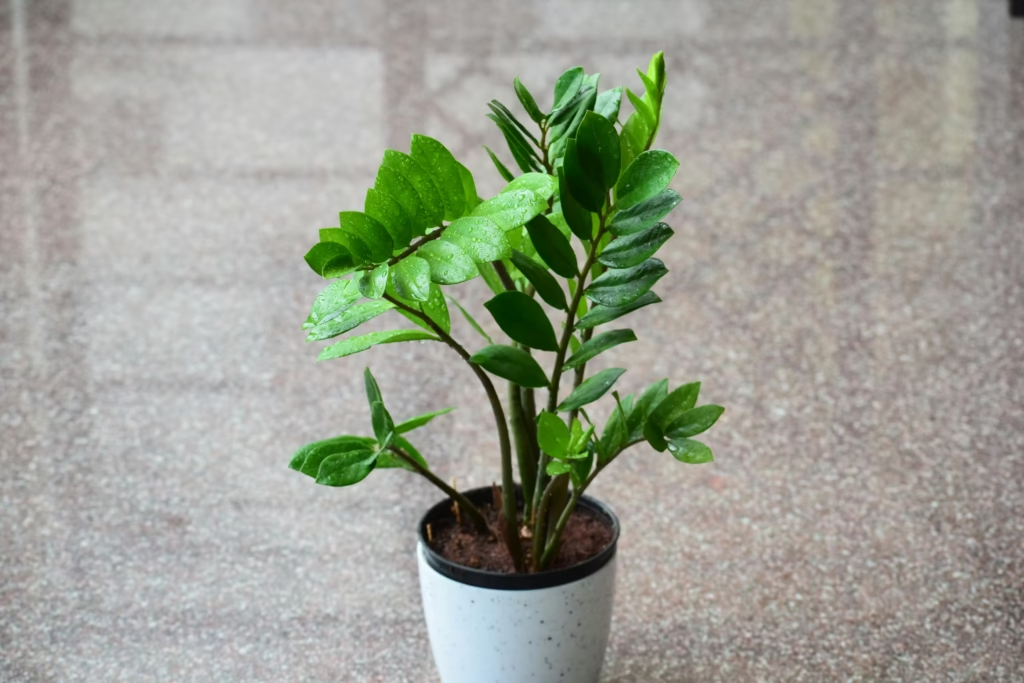
- Peace Lily (Spathiphyllum): Known for its white blooms, it’s an excellent air purifier that does well in dim spaces.

- Parlor Palm (Chamaedorea elegans): A touch of the tropics that thrives in low light and adds softness to your decor.

- Cast Iron Plant (Aspidistra elatior): True to its name, this plant is incredibly resilient and perfect for dim corners.

Photo by Kruidtuin, Leuven
- Philodendron: With a variety of species, these plants are low-maintenance and adaptable to less light.
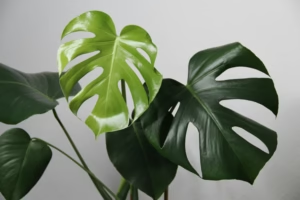
Don’t give up on your indoor greenery dreams—low-light plants make it easy to enjoy the beauty of nature in any space.
Enhance Your Space with the Transformative Power of Plants
Incorporating plants into your open-concept living room is more than just a decorative choice—it’s a lifestyle upgrade. From improving air quality and reducing stress to creating visually stunning focal points and serene corners, plants bring balance and vitality to your space. By thoughtfully placing greenery and embracing natural light, you can transform your home into a haven of beauty and well-being.
Now it’s your turn! Start small—add a lush monstera by your sofa or create a calming corner with a few low-maintenance plants. Notice the difference they make in your mood, productivity, and the overall vibe of your home. Don’t wait—let nature redefine your living space today!



